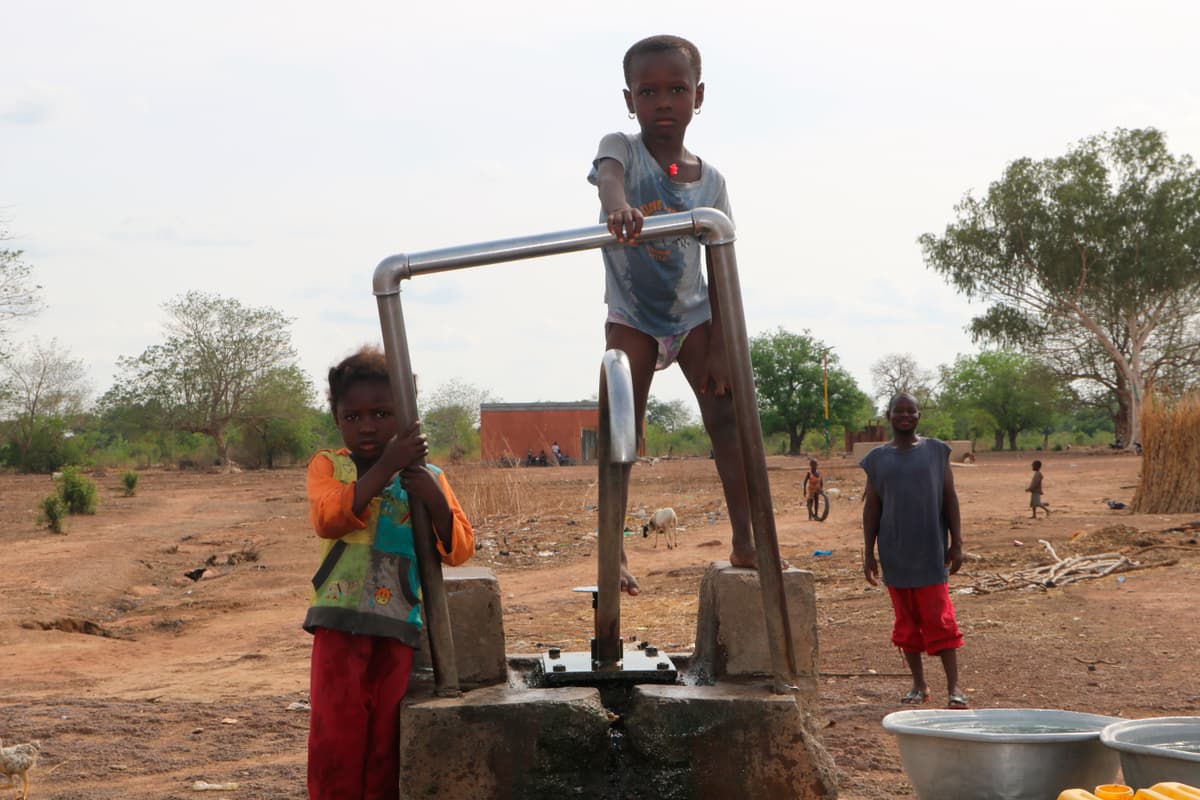Deadliest Al Qaeda Attack You’ve Never Heard of: 600 Civilians Dead in Burkina Faso Fails To Make Global Headlines
Militants opened fire, leaving mounds of bodies strewn along trenches and others faced down in the dirt as they attempted to flee.

In an attack that may rank as one of the deadliest in Africa in recent years, up to 600 civilians were slaughtered in August in broad daylight by Al Qaeda-linked militants in Burkina Faso, according to a French government security report and confirmed to The New York Sun by a representative of the Norwegian Refugee Council.
This assessment triples the original death toll estimate put out by the United Nations from the August massacre in the remote town of Barsalogho. Armed fighters from Jama’at Nusrat al-Islam wal-Muslimin, an Al Qaeda affiliate based in Mali, opened fire as they stormed the town on motorcycles. Chilling videos shared on the terrorist group’s social media captured the moments of terror — civilians, including women and children, shot by automatic gunfire at close range as they lay helpless in the dirt, trying to play dead.
The footage is perforated by the victims’ screams and cries as the militants continued to open fire, leaving mounds of bodies strewn along trenches and others faced down in the dirt as they attempted to flee. Even though hundreds of civilians were killed, it stands as one of the continent’s worst terrorist attacks. It rivals the 588 dead in the 2017 bombings at Mogadishu and the bombings of the 1998 United States Embassy in Nairobi that killed 213 and wounded more than 4,000. Thee Barsalogho massacre barely made a blip on the radar of the mainstream media.
“Despite the seriousness of the situation and the significant deterioration of the security situation that the attack demonstrated, it hardly drew any media attention,” the senior director of the Counter Extremism Project, Hans-Jakob Schindler, tells the Sun.
Similarly, a second Jama’at Nusrat al-Islam wal-Muslimin attack occurred on September 17 in neighboring Bamako, the Mali capital. More than 70 were slain and at least 200 more injured, with little coverage in the Western press.
According to Hans-Jakob Schindler’s assessment, there are two main reasons why the terrorist situation in West Africa is not getting much attention: One is that the conflict in the Middle East has taken center stage, and the second is that over the past two years, Western forces have withdrawn from the region almost entirely.
“We (no longer) have military assets in the region to push against the expansion of terrorism influence, nor do we have sufficient capabilities for a full intelligence picture,” Mr. Schindler explained. “This also means that media attention to the region is going down.”
For the most part, it is civilians caught in the crossfire.
The villagers, at the time of the assault at Barsalogho, were digging trenches to protect the town against jihadists under the orders of the military. Jama’at Nusrat al-Islam wal-Muslimin claimed that it only targeted militia members, although none of the dead were in military uniforms or appeared to possess a weapon.
The attack, however, underscores the growing risks of the authorities’ increasing dependence on coercing civilians to play a role in their fight against jihadist groups. These militant groups have destabilized large parts of the Sahel since the insurgency first took hold in neighboring Mali in 2012.
“Jama’at Nusrat al-Islam wal-Muslimin’s large-scale massacre at Barsalogho is not going to garnish that much attention, no matter how tragic, brutal and deadly an incident in Africa,” a Middle East and Africa security consultant, analyst, and defense consultant, Royce de Melo, tells the Sun. “Islamist-driven terrorist atrocities in Africa have been underreported for a long time in general. When Christians are massacred by Islamists in Africa, it doesn’t make headline news. Africa is easily ignored.”
Origins of Violence
France, once a key ally of Mali, deployed thousands of troops to the country in 2013 to combat insurgent groups. The United Nations then sent the 11,000-strong United Nations Multidimensional Integrated Stabilization Mission to Mali as a peacekeeping force. Together, these forces managed to recapture territories held by militants, but persistent attacks, such as those seen in 2015, led to widespread discontent among Malians.
Jama’at Nasr al-Islam wal Muslimin formed as a coalition of Salafi-jihadist groups in 2017 to adversary the Islamic State affiliate, operating across the Sahel region in West Africa and carrying out extensive attacks against civilians, local and international security forces – exploiting local grievances to fuel its insurgency.
“Jama’at Nusrat al-Islam wal-Muslimin has a Utopian ideology; like most Salafi-Islamist movements, it believes in establishing a perfect and pure Islamic society. But to create that Islamist Utopia, (the group) must remove any and all outside and Western influences,” Mr. de Melo says. “As the local Al Qaeda team that is part of a bigger Al Qaeda team, their immediate goal is conquering the Sahel and West Africa, but their overall long-term goal is global jihad, in having a world dominated by Islam.”
The violence is skyrocketing. Between 2021 and 2023, the number of attacks by armed groups surged by 46 percent across Burkina Faso, Mali, and Niger, resulting in the deaths of thousands of civilians.
“The massacres are getting worse. Jama’at Nusrat al-Islam wal-Muslimin wants to take control of Mali,” the former Africa counterterrorism director for the Pentagon, Rudolph Atallah, tells the Sun. “That has been part of the plan since 2011.”
Mr.Schindler concurred that violence perpetrated by terrorist groups in the Sahel region has been continuously growing over the past few years, including an expansion in the jihadists’ areas of control. The bloodshed, though, isn’t just stemming from the side of the terrorists.
In 2020, Colonel Assimi Goita led a military coup, overthrowing the civilian government of President Ibrahim Boubacar Keita of Mali. The coup-makers accused him of failing to tackle the country’s escalating insecurity. As anti-French sentiment surged, driven in part by the ongoing violence, Colonel Goita ordered the withdrawal of French troops and the United Nations peacekeeping mission by 2023, resulting in an even wider power vacuum for jihadists groups to fill.
As terrorism continues to spread in the absence of international forces, Mali’s junta has increasingly relied on Russia’s Wagner Group for military support, with around 2,000 Wagner fighters now stationed in the country.
Mr. Atallah emphasized that the Moscow mercenary deployment backing Mali’s junta has only inflamed tensions, with Russian troops widely accused of indiscriminate killings, sexual violence, and other human rights abuses. This is only driving more and more people toward Jama’at Nusrat al-Islam wal-Muslimin.
According to Mr. Schindler, the Russian fighters are not hired to conduct counterterrorism operations by the military juntas in Burkina Faso, Mali or Niger. Instead, they are paid to protect the current regimes in the country and guarantee the survival of their primary stakeholders.
“They (Russians) do also conduct counterterrorism operations, but these seem to result regularly in unmitigated violence against civilians and massacres,” he continued.
While the Pentagon’s Africa Command has a limited presence across the continent, America has retreated from the wars in Africa and fears grow that the escalating mayhem — especially in the Sahel — may be a ticking time bomb for Washington.
“The growth of al Qaeda anywhere on the globe should always be of concern,” Mr. Hans-Jakob Schindler added. “Al Qaeda has not changed its ideology, and the West is still the primary target.”

